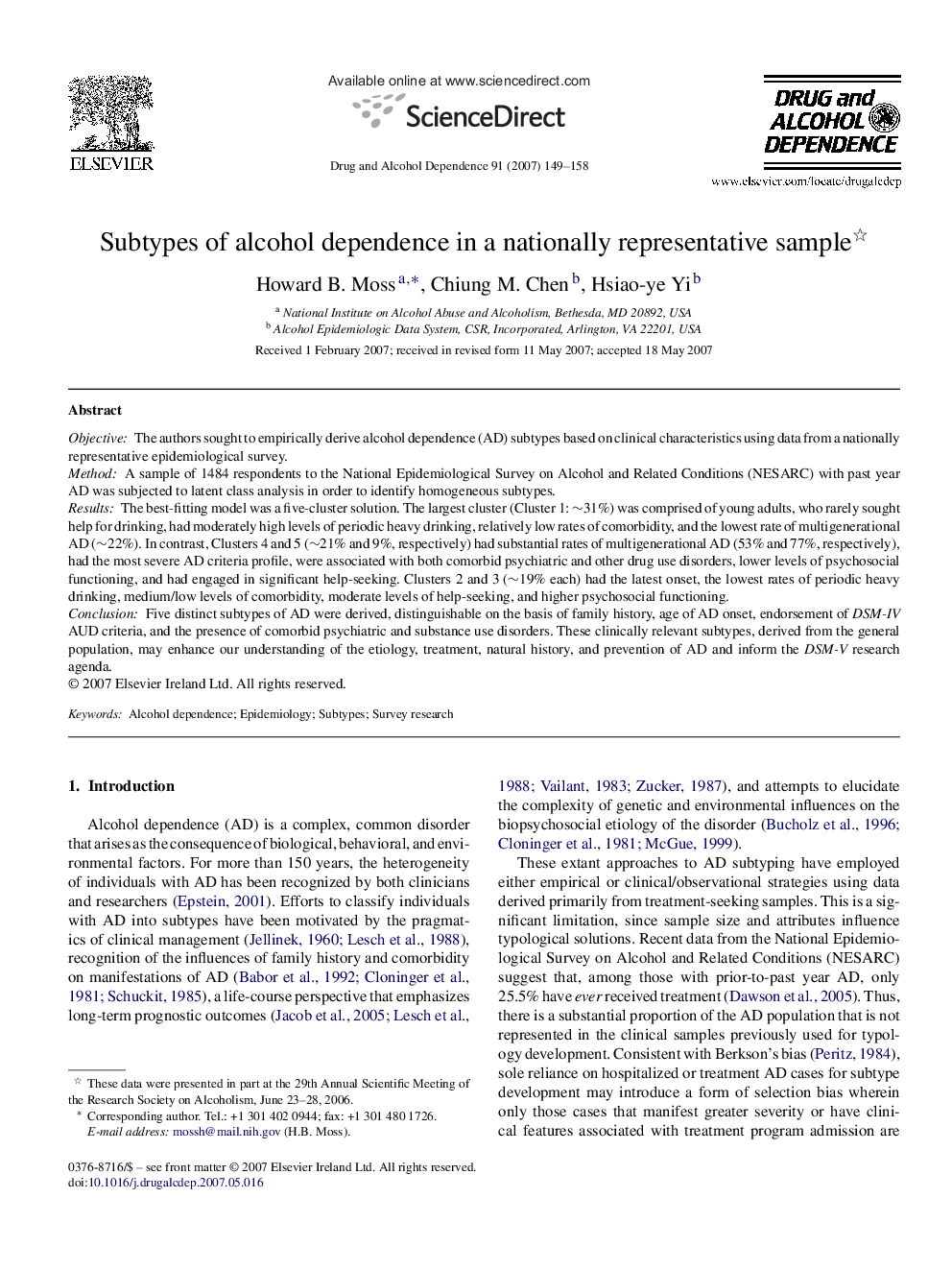| Article ID | Journal | Published Year | Pages | File Type |
|---|---|---|---|---|
| 1071170 | Drug and Alcohol Dependence | 2007 | 10 Pages |
ObjectiveThe authors sought to empirically derive alcohol dependence (AD) subtypes based on clinical characteristics using data from a nationally representative epidemiological survey.MethodA sample of 1484 respondents to the National Epidemiological Survey on Alcohol and Related Conditions (NESARC) with past year AD was subjected to latent class analysis in order to identify homogeneous subtypes.ResultsThe best-fitting model was a five-cluster solution. The largest cluster (Cluster 1: ∼31%) was comprised of young adults, who rarely sought help for drinking, had moderately high levels of periodic heavy drinking, relatively low rates of comorbidity, and the lowest rate of multigenerational AD (∼22%). In contrast, Clusters 4 and 5 (∼21% and 9%, respectively) had substantial rates of multigenerational AD (53% and 77%, respectively), had the most severe AD criteria profile, were associated with both comorbid psychiatric and other drug use disorders, lower levels of psychosocial functioning, and had engaged in significant help-seeking. Clusters 2 and 3 (∼19% each) had the latest onset, the lowest rates of periodic heavy drinking, medium/low levels of comorbidity, moderate levels of help-seeking, and higher psychosocial functioning.ConclusionFive distinct subtypes of AD were derived, distinguishable on the basis of family history, age of AD onset, endorsement of DSM-IV AUD criteria, and the presence of comorbid psychiatric and substance use disorders. These clinically relevant subtypes, derived from the general population, may enhance our understanding of the etiology, treatment, natural history, and prevention of AD and inform the DSM-V research agenda.
